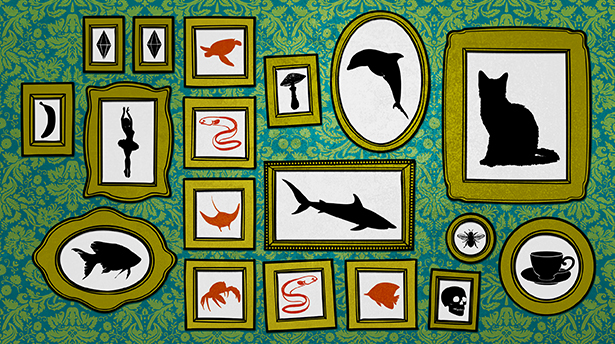The Slippery Eel of Probability

How do you solve probability problems that appear to have more than one correct answer?
n school, we are trained to think that math problems always have one correct answer. But this is not necessarily true for problems dealing with probability, if the method used to reach the described situation is not fully specified. Surprisingly, the same problem can then have many different answers, all apparently equally valid. Take, for example, our new puzzle:
An art collector who loves pictures of sea creatures, especially eels (there’s no accounting for taste!), commissions an art project. In his living room, he arranges a set of six blank canvases in an L-shaped configuration, with four in a vertical column and three in a horizontal row (the corner canvas is part of both). He hires an artist, with these instructions: “You can paint a single sea creature of your choice on each of these canvases, with one condition. I would like to see a picture of an eel when I move my gaze vertically or horizontally. So there must be at least one eel in the vertical column and at least one in the horizontal row.” The artist does this, following her own preferences when they do not conflict with the instructions.
What is the probability that the corner canvas has a picture of an eel?The first possible naïve answer that may come to mind is that the probability is one in four because there are four vertical pictures, or perhaps one in three because there are three horizontal ones. Is either answer correct? Are both?
To make this concrete, if your friend offered to pay you $2 if the corner canvas did not have a picture of an eel, and you had to pay her just $1 if it did, would you take the bet? Assume that your friend knows exactly what you do about the situation.
The last question is not facetious. There is a famous problem in probability known as Bertrand’s paradox whose statement is simple: What is the probability that a random chord of a circle is larger than the side of the equilateral triangle inscribed in the circle? To do this you have to determine the density of such chords by “counting” how many are larger than the side of the triangle and dividing that by the total number of chords. The answer can be ¼, ⅓ or ½, depending on how the chords are counted. All of these answers are correct in different circumstances.
“Wait a minute,” you might say, “that’s because there are an infinite number of chords in a circle, and counting infinities is always problematic. It can’t happen when the numbers are finite.” But it can when, as above, the method of accomplishing a task is not clearly specified to a T (or L!). Probability is a fluid beast, slippery as an eel, one that can appear in many different places at the same time if all the avenues of ambiguity are not completely nailed down....MORE